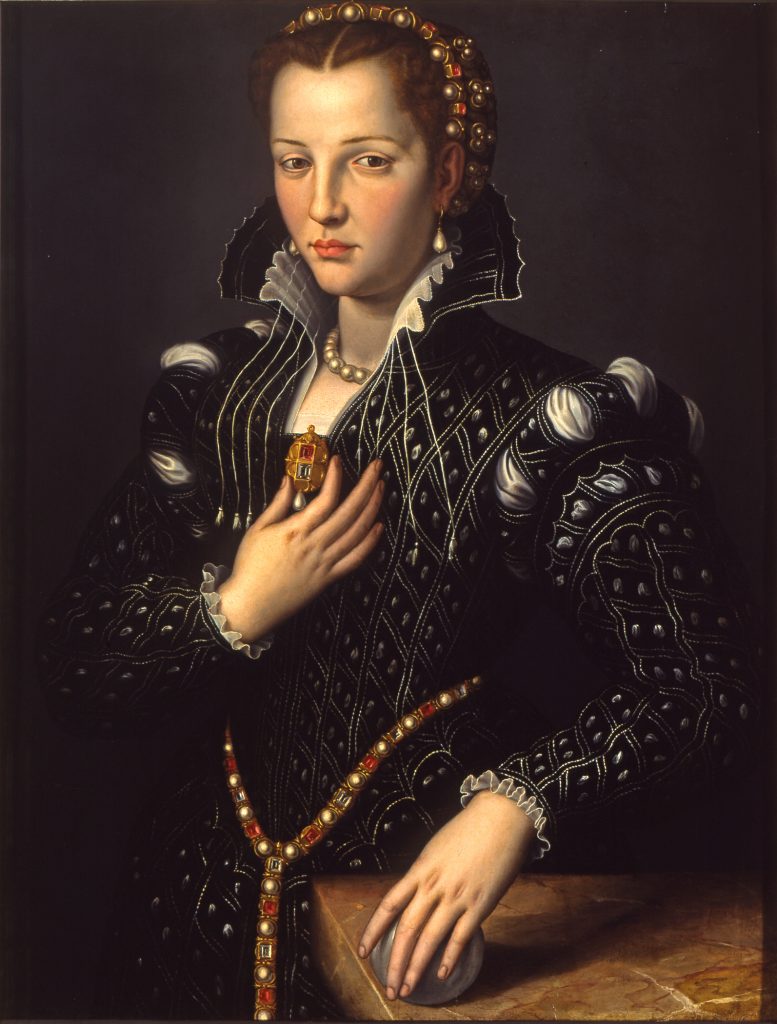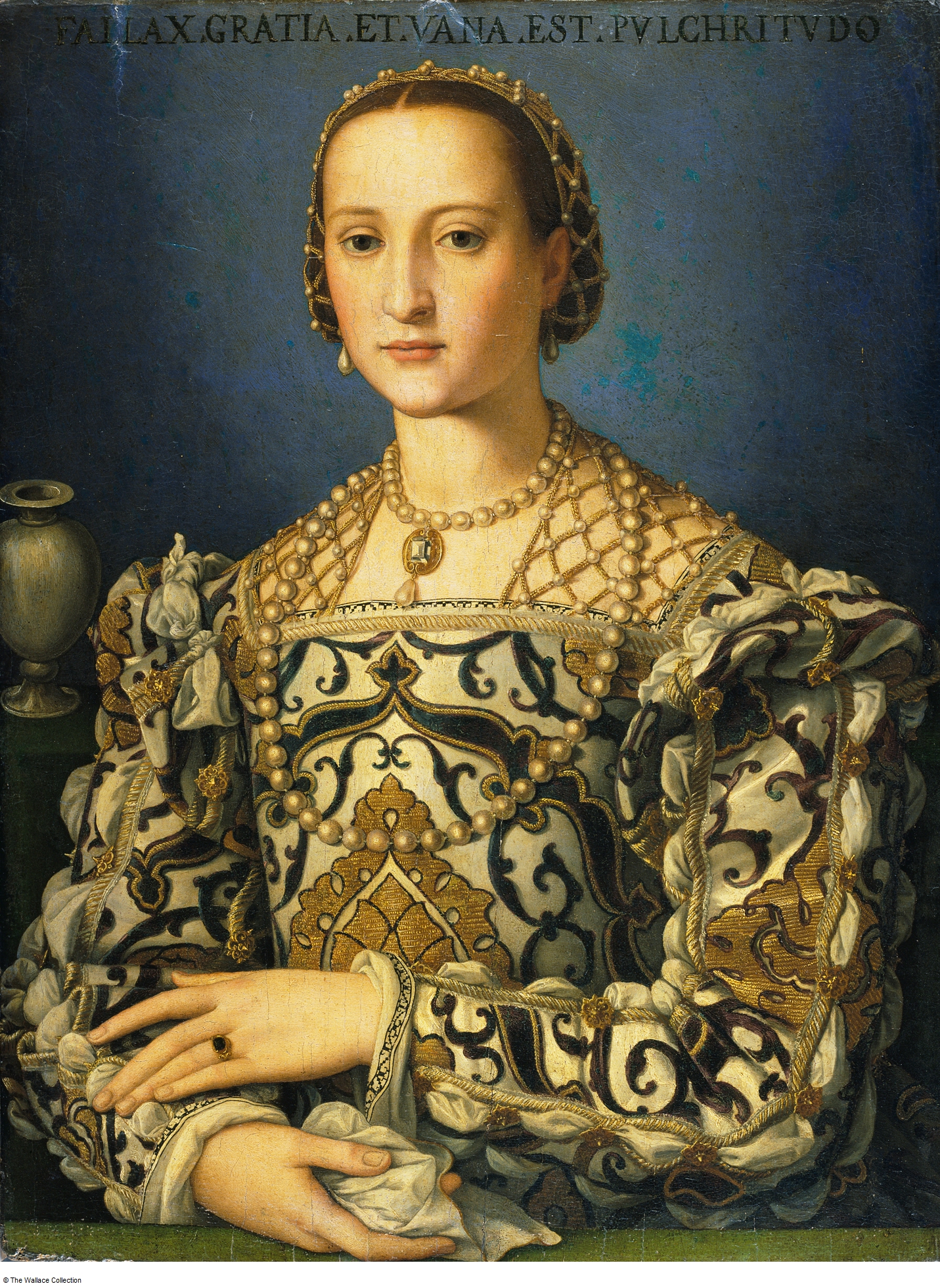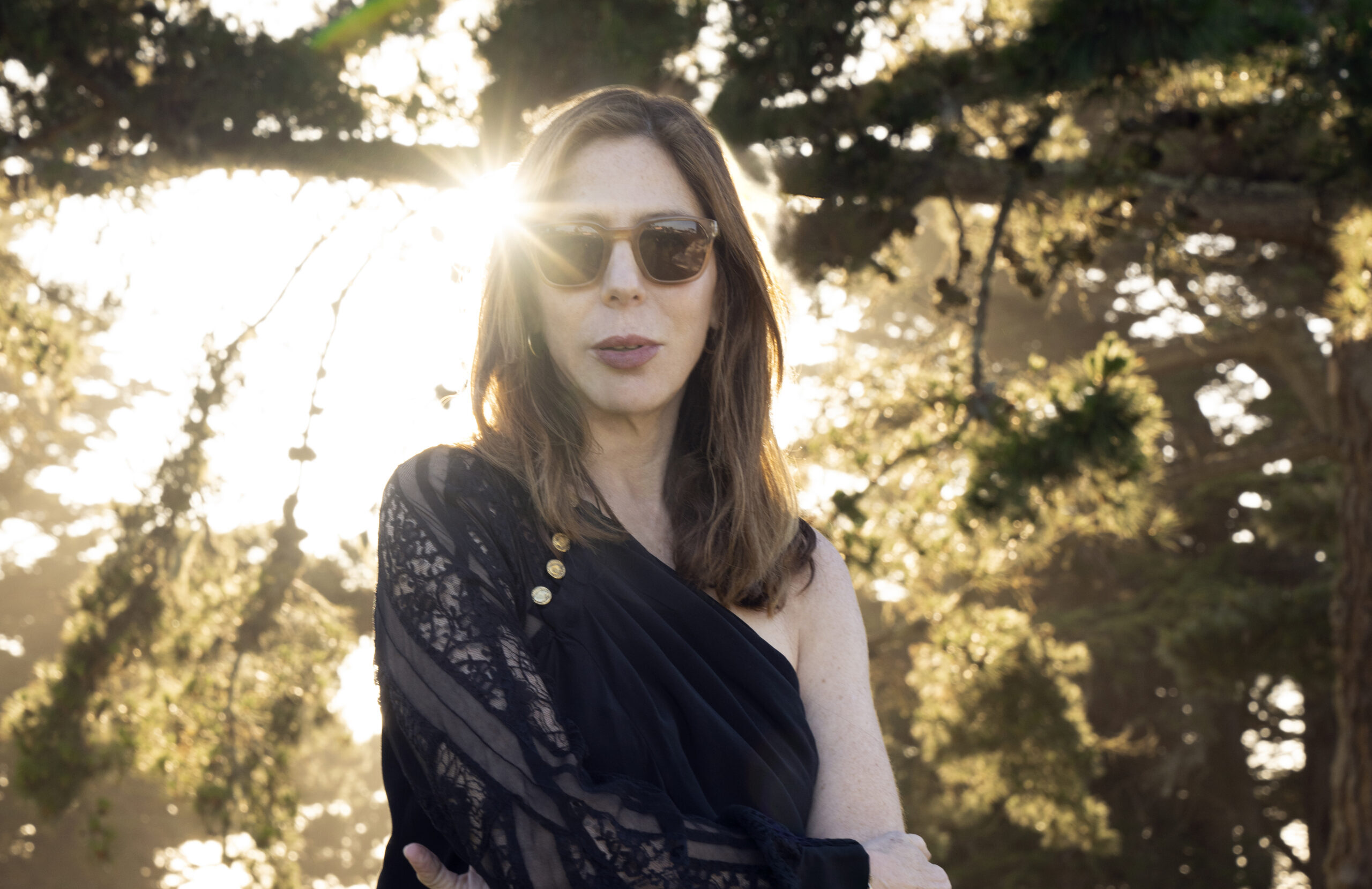Irish novelist Maggie O’Farrell is known for her deeply researched and imaginative dives into historical fiction, such as the retelling of Shakespeare’s life in her book, “Hamnet.”
In her latest novel, “The Marriage Portrait,” O’Farrell takes us into the world of Renaissance Italy, where she unravels the tale of a young woman, Lucrezia de’ Medici.
“To The Best Of Our Knowledge” producer Shannon Henry Kleiber talked with O’Farrell about what we can learn about history and ourselves through the many layers of portraits.
Stay informed on the latest news
Sign up for WPR’s email newsletter.
This interview has been edited for clarity and length.
Shannon Henry Kleiber: Maggie, the genesis of your book, “The Marriage Portrait,” came at a moment when you saw an oil painting of Lucrezia de’ Medici. I love how one moment can inspire your writing. Can you take us there to that moment when you decided to write this book?
Maggie O’Farrell: This is a novel that was inspired first by a poem and then by a painting. I came to the portrait via Robert Browning’s probably most famous poem, “My Last Duchess,” which is one of his dramatic monologues, which I occasionally reread when I’m between novels, just because they are so absorbing and so shocking and so technically perfect and so psychologically astute.
“My Last Duchess” features an Italian Renaissance Duke, and he’s talking to a visitor, and he’s showing them the portrait of his former wife. And he says, “She’s so beautiful, isn’t she? She used to annoy me sometimes. Oh, by the way, I killed her.”
I’ve always loved this poem, and I was just wondering to myself one day whether or not it was based on real people. And it wasn’t long before I had her name — Lucrezia de’ Medici — and the really sad fact that she’d been 16 when she died. And then this portrait, which is attributed to Agnolo Bronzino, was downloading on my very old phone screen. I could see this jeweled headdress. And then I saw this very pale brow and then this very large, slightly startled looking brown eyes. She looks quite anxious. She’s wearing this very dark dress against a black background with a white collar. And she’s adorned with jewelry, which I later found out is half from her father’s dynasty and half from her husband-to-be dynasty.
But as soon as I saw her, it was a kind of lightning bolt. I knew as soon as I looked into her eyes that I was going to write a novel about her and that I was looking at the subject of my next book.

SHK: Wow. Portraits are so revealing. You were pulled in through her eyes. Who would be the subject of a portrait in those times?
MO: In those times, it varied. In order to have your portrait painted in the 16th century in what we now call Italy — because we’re talking about Italy before Italy existed, in a sense, that was made up of a kind of jigsaw of city states governed by men like Lucrezia’s father, who was Cosimo de’ Medici, Grand Duke of Tuscany, and her husband Alfonso d’Este, Duke of Ferrara. The kind of wealth that men like Cosimo and Alfonso had is absolutely jaw dropping. I mean, Lucrezia’s dowry was 200 gold scudi. I mean, I had no idea what that meant. So I asked an historian.
SHK: What does that mean?
MO: Well, apparently it’s the equivalent of $50 million in today’s money. Cosimo was unbelievably wealthy, so he was able to commission portraits of all his family, of himself, of his wife. He and his wife, Eleanora de Toledo, had pretty much an arranged marriage, as Lucrezia’s was. But unusually for their class and time, they really loved each other. They adored each other.
One of my favorite portraits is of her because the most expensive color in those days was blue because it was made from powdered lapis lazuli. There’s one portrait of Eleanora and the background — which is normally landscapes — is just blue, so much blue. And I just have this kind of vision of Cosimo saying, “I want more lapis, more of it. I want everyone to know how gorgeous my wife is and how lovely she looks and how rich we are!”

SHK: So it’s really to tell people about your status.
MO: It was status, but it was also about betrothal. You didn’t necessarily see your future wife-to-be or your husband-to-be before the wedding, so you would be sent literally an oil painting.
SHK: It’s like what a dating site would be now in those days.
MO: Exactly. A lot of marriages were arranged like that. Henry VIII apparently was very disappointed. He’d seen a painting of one of his wives and he’d approved and said yes, OK, I’ll marry her. And then when she actually arrived, he realized that the painter had been… kind, shall we say? He was apparently not very pleased with the real-life version.
I think it was problematic because as the artist, you’d want to be paid and you wouldn’t want to do a “warts and all” portrait. But at the same time, there’s an awful lot riding on these betrothal portraits.
SHK: It’s so interesting about marriage itself, too. If you’re looking from the outside at someone’s marriage, it’s so complicated, depending on how you’re viewing it. Did you think about that as you were creating this story, that a marriage is a complicated thing?
MO: Absolutely. I felt very sorry for Lucrezia for a lot of reasons, actually, because she was married to Alfonso, who by many accounts was very cold and pretty heartless. I think really all he was looking for was basically just a womb that was going to produce lots of heirs for him and for his region. He was married to Lucrezia for a year before she died. Possibly murdered by him, possibly not. There was a rumor that he did murder her.
The autopsy when she died said that she died of natural causes. I should mention that the autopsy was performed by Alfonso’s court doctor. So a man in his pay. When she died, Cosimo and Eleanora sent their court physician from Florence to attend the autopsy. But it was performed before they arrived. She was already buried. So make of that what you will.
SHK: So the marriage portrait was created before she was married?
MO: Yes. The only picture we have of Lucrezia is one that was commissioned by the Medicis just before she began her married life at the age of 15. And one of the many questions that arose for me — seeing as that the other siblings and her parents were painted numerous times in numerous situations and positions — but Lucrezia was only painted once in this one portrait. And even sadder than that, there is a room in the Uffizi Gallery in Florence dedicated to the branch of the Medicis that was Lucrezia’s family. But she’s not there. The rest of them are there.
I spent a long time trying to track down this portrait, the original of the portrait that I had seen on the internet, and I knew that it was somewhere in the Uffizi Gallery. And I had three art historians in Florence who were helping me, and they couldn’t find it either. We were really baffled. And eventually one of them said, “I think it’s in the (nearby) Palazzo Pitti.” So I went there and I had a printout of the portrait, and I was showing all the guards. I said, “Can you tell me where this portrait is?” And they all said, “No, I’ve never seen it before. It’s not here. You’ve made a mistake. I don’t know where it is.”
So I spent ages and hours walking around, and eventually I found it. And it’s in this very, very small, quite distant, very crowded room — I mean, crowded with portraits. And it’s low down on the wall next to a fire extinguisher. And there she is. And it’s about the size of a hardback book. That really broke my heart. I thought, why? Why is she over here on her own? Why isn’t she with the rest of her family? And why is she in such an ignominious position? You know, she ought to be in the main Uffizi. She ought to be in that room with her family.
SHK: And so she deserved her story to be told.
MO: Yes, exactly. I just always got the impression that Lucrezia was overlooked and underloved. A lot of portraits of young girls in the Renaissance look very meek and expressionless, almost blank. It was the style. But Lucrezia, I think, looks really troubled. She looks worried. She looks anxious. And crucially for me, she looks as if she has something she wants to say.
SHK: You really are painting a portrait in “The Marriage Portrait.”
MO: Yes. It is a kind of motif that runs through the novel. As I was researching it, I read about the techniques that Renaissance artists used. A lot of these artists were actually very poor, they lived from hand-to-mouth. So a lot of them actually painted over old canvases or old work or old tableaux. That really thrilled me, the idea that you might go to a gallery now, see an incredibly famous painting, and there might be another painting behind it.
But who would take turpentine to “The Birth of Venus?” It’s possible, you know. People have X-rayed the “Mona Lisa” and have seen that Da Vinci tried out different iterations of her smile before settling on the last one. And to me, that feeds a lot into it. I wanted the idea of the underpainting — other narratives, hiding in the shadows behind the one that we think we know.
SHK: There’s underpainting through your book. And you did that delving deeper into these layers. What was going on in your life when you were working on this book?
MO: Suffice to say that I had the idea first in February 2020, so I probably don’t even need to say what ensued — I wrote this book bookended by the pandemic and by lockdown. Essentially, Lucrezia and her brothers and sisters lived in lockdown their whole lives.
To be the daughter of an incredibly powerful ruler like Cosimo, to be born into that dynasty, obviously, she was born into a life of enormous, enormous privilege. But at the same time, it was too dangerous for Lucrezia and her brothers and sisters because they were the very, very precious heirs to the Medici throne. They could be kidnapped, they could be assassinated. So they were kept indoors pretty much all their life. As children, they lived in two rooms up on the fourth floor of the Palazzo, and if they wanted exercise, they would walk around the battlements and that was it.
SHK: You related during the pandemic.
MO: I suppose I only thought about it afterwards. But yeah, I don’t think it’s a coincidence that I was writing about a life of confinement.
SHK: How do you think modern day portraiture, photography, Instagram can show things in a different way from that portraiture? Or how is it the same? I mean, I look back at these gorgeous layers of paint and think, “That stands forever.” And then these kind of fleeting Instagram things can be deleted, but maybe they are forever, too. I mean, our online persona can be forever.
MO: Maybe that’s true. Yeah, I would say that to my kids as a warning. I think in a lot of ways it’s pretty much the same.
Obviously the world changes all the time. The world of the character living in the Palazzo Vecchio is completely gone. Our world would be utterly alien to her. But I think at the same time, human hearts and minds and brains haven’t really changed that much at all. And when people are posting pictures on Instagram, they want to wear the nicest clothes and their best jewelry and their makeup, and they want their hair to look good, just as the Renaissance people did when they were getting ready for their portrait. They were thinking about what cloth flattered them the most. They were thinking about jewelry, how to wear their hair, where to stand.
Did they want to lean on books to look clever? Do they want to have their region behind them to say, check out how powerful I am?
You know, it’s actually just the same, isn’t it?





